Q: The Department of Occupational Safety and Health Administration (OSHA) has released an Emergency Temporary Standard (ETS) to minimize the risk of COVID-19 transmission for companies with 100 or more employees. Who must follow the mandate, and does it require all employees to become vaccinated?
A: On November 4, OSHA released the COVID-19 Vaccination and Testing: Emergency Temporary Standard. Affected employers must comply with the order by December 6, 2021. State Plans will have 30 days to adopt the federal ETS. State Plans must either amend their standards to be identical or “at least as effective as” the new standard or show that an existing State Plan standard covering this area is “at least as effective” as the new Federal standard. The 5th U.S. Circuit Court of Appeals in New Orleans has issued a stay temporarily blocking the ETS. Employers are advised to prepare for the ETS while litigation is pending.
OSHA has a dedicated webpage found at https://www.osha.gov/coronavirus/ets2 for private employers for the ETS. This includes implementation tools as well as a comprehensive list of Frequently Asked Questions to assist Employers in navigating the temporary order. Healthcare providers should refer to the COVID-19 Healthcare ETS Website.
What is the mandate?
Employers who have 100 or more employees will need to follow the OSHA Emergency Temporary Standards. Under the recently released guidance, the ETS requires covered employers to develop, implement, and enforce a policy that:
- Requires a mandatory COVID-19 vaccination policy with exemptions for religious and medical needs
- Allows employees who are not fully vaccinated to elect to undergo weekly COVID-19 testing and wear a face covering at the workplace.
- A combination of mandatory and voluntary vaccination policies as addressed in Question 3 part B of the FAQ. (see below under Employer Resources)
Health care providers are required to implement a mandatory vaccination policy.OSHA has provided sample policies on its website at https://www.osha.gov/coronavirus/ets2 under Implementation.
How do I determine which employees must comply?
Generally, an employer must count all full-time, part-time and temporary employees at the time the ETS is in effect. If an individual works at home, they should be counted to determine if they are subject to the mandate. If at any time an employer reaches 100 or more employees due to temporary or full-time employees, the employer will be subject to the ETS until the standard expires, regardless of employee count.
The questions and answers in Paragraph 2 of the FAQ (see below under Employer Resources), will help an employer to determine if they fall under the ETS. The questions include remote workers, multiple work locations, staffing agency employees and independent contractors.
How do we determine the vaccination status of employees?
In order to enforce the plan, employers must also determine the vaccination status of each employee, obtain and retain acceptable proof of vaccination and keep a roster of each employee’s status. Since the vaccination status is considered a medical record, employers must adhere to ADA guidance on ensuring the records are kept confidential and separate from the personnel file. Employee Vaccination status questions are answered in Paragraph 4 of the FAQ (see link below under Employer Resources). An employee who provides false information or certification can be subject to a fine of up to $10,000. OSHA provided a fact sheet for Information for Employees on Penalties for False Statements and Records here.
What are the paid time off requirements for an employee to get vaccinated?
Employers are required to support COVID-19 vaccination for each employee by providing reasonable time to each employee during work hours for each of their primary vaccination dose(s), including up to four hours of paid time at the employee’s regular rate of pay. This time off is in addition to any other paid time off benefits. The time may include, but is not limited to:
- Time spent during work hours related to the vaccination appointment(s), such as registering, completing required paperwork, all time spent at the vaccination site.
- Time spent traveling to and from the location for vaccination.
- Situations in which an employee working remotely (e.g., telework) or in an alternate location must travel to the workplace to receive the vaccine).
Employers are required to provide reasonable time and paid sick leave for an employee to recover from side effect as a result of the vaccine. The paid leave for recovery can be in the form of any accrued sick leave already available. If an employee does not have any sick leave, the employer must provide sick leave for this purpose.
Paragraph 5 of the FAQ addresses time off for the vaccine and any time needed for recovery (see link below under Employer Resources). This section also addresses the fact that you do not need to pay the employee if the shot is given on a scheduled day off.
If I do not mandate vaccines, what are the requirements for masks and weekly testing?
Masking or face covering is addressed in Paragraph 8 of the FAQ (see below under Employer Resources). An employee who is not fully vaccinated must wear a face covering when indoors and occupying a vehicle with another person for work purposes except:
- When an employee is alone in a room with floor to ceiling walls with the door closed.
- For a limited time when eating or drinking at the workplace.
- For identification purposes in compliance with safe and security requirements.
- Where the employer can show the use of face coverings is infeasible or creates greater hazard that would excuse compliance.
Employees who are not working from home and are not fully vaccinated per the definition of WHO must get tested weekly beginning January 4, 2022, per FAQ 12.A. The test used must be cleared, approved or authorized by the FDA and administered in accordance with authorized instructions—with the noted exception of not allowing tests that are self-administered and self-read by the employee unless observed by the employer. Although this ETS does not require employers to pay for testing, employer payment for testing may be required by other laws, regulations, or collective bargaining agreements or other collectively negotiated agreements. This section of the ETS also does not prohibit the employer from paying for costs associated with testing. Otherwise, OSHA leaves the decision regarding who pays for the testing to the employer. Employers must maintain copies of the test result.
If an employee does not provide the result of a COVID-19 test, the employer must keep the employee removed from the workplace until the employee provides a test result.
Are there employer penalties for employers who do not comply with the ETS?
An employer who does not comply with the ETS will be subject to up to $13,653 per violation and additional citations or penalties as determined by OSHA.
What information must an employer provide to employees?
Employers will need to provide or inform employees of the following:
- Information about the requirements of the ETS and workplace and procedures to establish and implement the ETS.
- The CDC document “Key Things to Know About COVID-19 Vaccines”
- Information about protections against retaliation and discrimination.
- Information about laws that provide for criminal penalties for knowingly supplying false statements or documentation.
- Upon request and within 24 hours, provide vaccination rate for employee workforce.
Employers are encouraged to review the information on the OSHA websites and read the FAQ to better understand the ETS.
Employer Resources
- COVID-19 Vaccination and Testing: Emergency Temporary Standard
- Employer Obligations and the COVID-19 Vaccination Mandate Infographic
- Federal Court Blocks OSHA COVID-19 Vaccination and Testing ETS
- Medical Exemption for Vaccine Mandate
- Religious Exemption for Vaccine Mandate
Non-Healthcare Employers
- Emergency Temporary Standard COVID-19 Vaccination and Testing (Non-Healthcare)
- FAQ – Emergency Temporary Standard COVID-19 Vaccination and Testing (Non-Healthcare)
- COVID-19 Vaccination and Testing ETS
- Fact Sheet COVID-19 and ETS
- Worker’s Rights Under the COVID-19 Vaccination and Testing ETS
- Information for Employees on Penalties for False Statements and Records
- EEOC Mandatory Vaccination Sample Policy
- EEOC Vaccination or Testing and Face Covering Sample Policy
Healthcare Employers
- Emergency Temporary Standard COVID-19 Vaccination and Testing (Healthcare)
- FAQ – Emergency Temporary Standard COVID-19 Vaccination and Testing -Healthcare Providers
- Summary COVID-19 Healthcare ETS
- COVID-19 Healthcare ETS
- Fact Sheet COVID-19 Healthcare ETS
- Protecting Workers’ Rights under the COVID-19 Healthcare ETS







